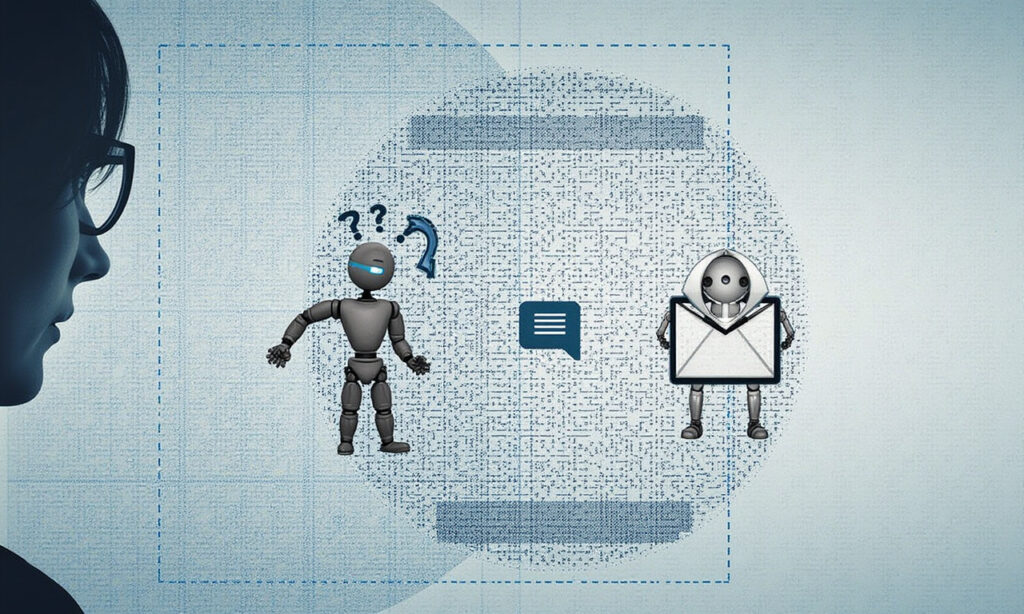A recent discovery by cybersecurity researchers at SentinelOne has uncovered a sophisticated spam campaign driven by an AI-powered botnet known as AkiraBot. This bot has successfully targeted and spammed over 80,000 websites since September 2024, exploiting contact forms, live chat widgets, and comment sections to promote dubious search engine optimization (SEO) services.
The AkiraBot Framework
AkiraBot is a Python-based framework that stands out from typical spam tools due to its advanced capabilities. It leverages OpenAI’s large language model (LLM) to generate customized outreach messages tailored to the specific content of the targeted website. This approach makes the spam messages highly variable and contextually relevant, allowing them to evade traditional spam detection systems.
AI-Generated Content
The bot uses OpenAI’s GPT-4o-mini model to craft individualized messages by scraping the target website’s content and feeding it into pre-defined templates. This results in human-like spam that is both persuasive and difficult to filter out. The messages promote two SEO services, Akira and ServiceWrap, which are likely fraudulent given the nature of the campaign.
CAPTCHA Bypass Techniques
One of the most significant features of AkiraBot is its robust CAPTCHA bypass capabilities. The bot employs a combination of browser fingerprint spoofing and automated CAPTCHA-solving services. It uses tools like Selenium to open websites and simulate user behavior, while injecting JavaScript code (inject.js) to modify browser attributes such as audio context, WebGL, system memory, timezones, and navigator objects. This makes the fake browser appear as a legitimate user to the web server.
If the browser emulation is insufficient, AkiraBot falls back on external CAPTCHA-solving services like Capsolver, FastCaptcha, and NextCaptcha. This multi-layered approach ensures that the bot can bypass even the most stringent CAPTCHA protections, including hCAPTCHA and Google reCAPTCHA.
Network Evasion and Proxy Rotations
To avoid detection and network-based blocking, AkiraBot utilizes a proxy service called SmartProxy. This service allows the bot to rotate through both data center and residential IPs, making it challenging for websites to identify and block the spam traffic. The bot’s operators have invested significant effort into ensuring that the traffic appears as legitimate as possible, making network evasion a core component of its operation.
Targeting Small to Medium-Sized Businesses
AkiraBot primarily targets small to medium-sized businesses (SMBs) that use popular website builders like Shopify, GoDaddy, Wix, and Squarespace. These platforms are chosen for their ease of use and widespread adoption among SMBs, making them attractive targets for spammers. The bot’s ability to target live chat widgets, including those provided by Reamaze, further expands its reach into the customer support channels of these businesses.
Impact on Small Businesses
The campaign poses a significant threat to small businesses, as it clogs communication channels with spam messages, making it harder for these businesses to identify genuine customer inquiries. The personalized nature of the spam messages increases the likelihood that recipients might engage with the fraudulent offers, potentially damaging the businesses’ online reputation.
Practical Applications and Mitigation
Given the sophistication of AkiraBot, traditional CAPTCHA filters and basic spam detection systems are no longer sufficient. Website owners are advised to incorporate more complex, interaction-heavy challenges to inhibit such campaigns. Here are a few strategies:
Advanced CAPTCHA Alternatives
Instead of relying solely on CAPTCHA, websites can implement more interactive challenges that require genuine human interaction. This could include puzzles that require more than just visual recognition or tasks that mimic real user behavior in a more complex way.
Behavioral Analysis
Implementing behavioral analysis tools that track user behavior on the website can help identify and block automated traffic. This includes monitoring for patterns that are typical of bots, such as rapid form submissions or unusual navigation paths.
Regular Security Updates
Keeping website security measures updated, including the use of the latest anti-spam plugins and security patches, is crucial in protecting against evolving threats like AkiraBot.
Conclusion
The emergence of AkiraBot highlights the evolving landscape of spam and cybersecurity threats. As AI technologies become more accessible, adversaries are increasingly leveraging them to bypass traditional defenses. For small businesses and website owners, staying vigilant and adopting advanced security measures is essential to mitigate these threats and protect their online presence.
By understanding the capabilities and tactics of AkiraBot, we can better prepare for the future of spam and cybersecurity, ensuring that our digital communications remain secure and trustworthy.
